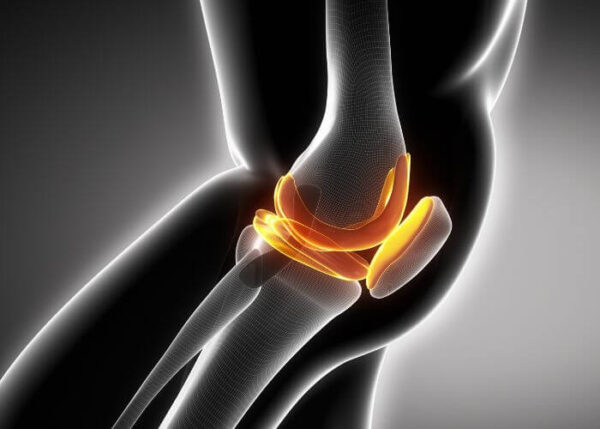Meniscal Root Repair Surgeon

Are you an athlete who participates in sports that involve jumping or running? If so, you may be at risk of tearing the root of your meniscus. A meniscal root tear can occur from degeneration or from a traumatic event. Meniscal root repair surgeon, Doctor Riley J. Williams provides diagnosis as well as surgical and nonsurgical treatment options for patients in Manhattan, Brooklyn, New York City and surrounding areas who have suffered a meniscal root tear. Contact Dr. Williams’ team today!
What is a meniscal root repair?
Meniscal root repair is a procedure that is performed to stabilize a torn meniscus attachment to the tibia (shinbone). Most of these types of injuries, that are symptomatic, require surgery. Conservative treatment methods are typically reserved for patients who would not recover well with surgery (i.e. very elderly patients). Surgery is performed to re-anchor the meniscus to the bone through by arthroscopic methods. Arthroscopic surgery involves the surgeon making very small incisions in the knee; a small tube with a camera attached to the end of it is inserted in the knee, and allows the surgeon to see inside the knee joint. The arthroscope displays images on a large monitor for Dr. Williams to see where to stich the root back to the tibia using small instruments. Dr. Riley J. Williams, orthopedic knee specialist, serving Manhattan, Brooklyn, New York City, NY and surrounding areas, has extensive experience in meniscus root repair surrounding a meniscal root injury.

What is a meniscal root injury or tear?
The meniscus is C-shaped cartilage in the knee between the tibia (shinbone) and femur (thigh bone). Each knee has two menisci: one on the medial side (inside) and one on the lateral side (outside). The main portion of the meniscus attaches to the tibia both in the front and in the back, the anchor point of this attachment is called the meniscal root, where it connects to the bone. The function of the meniscus is to act as a shock absorber, provide stability and to protect cartilage in the knee while walking or running. A tear to the meniscal root can be difficult to recognize and treat appropriately because these injuries are hard to visualize on MRI. A meniscal root injury can involve tears that are classified as degenerative or traumatic. Degenerative type tears typically occur in patients over 40 and usually involve the medial meniscus. Traumatic tears typically occur in younger, athletic populations on the lateral side. Most meniscal root injuries or tears occur very close to the root or insertion of the meniscus on the tibia. These tears are very distinct, and go from the inner rim to the outer rim of the meniscus. Such tears are called radial tears. These types of tears account for 90% of all meniscal root tears.
How is a meniscal root repair performed?
Traditional repair treatment for a meniscal root injury involves a partial meniscectomy, this option may be best for some patients. In general surgeons would like to preserve as much meniscus tissue as possible with meniscal root repair procedures. There are four meniscal roots tear treatment strategies:
- Repair with pull-out tunnel technique
- Repair with suture anchors
- Repair with side-to-side sutures
- Partial meniscectomy.
Repair with the pull-out tunnel technique is reserved for when the meniscal root is torn from the tibia. One or two small tunnels are drilled through the tibial bone to area of the native root insertion of the meniscus. Non-absorbable sutures or stitches are used to secure the root back onto the bone. Special screws, pull-out buttons or bone bridges may be used to cinch down the sutures.
Repair with the suture anchor method involves the placement of small pledget or hook implant near the native meniscal root insertion. This implant usually is loaded with sutures which in turn facilitate a repair by allowing the surgeon to reattach the meniscus to its normal insertion point on the tibia.
Repair with side-to-side technique refers to the use of simple stitches to sew a split meniscus back together. The side to side technique of stitching the root is typically done for complex meniscal root tear injuries or when the root is torn too close to the tibia.
A partial meniscectomy involves removing a subsection of the meniscus (the area of the tear) as a means of relieving pain in affected patients.
What are the risks of a meniscal root repair?
In general, meniscal root repair is a safe procedure. Dr. Williams will administer antibiotics before the procedure to prevent infection. The minimally invasive nature of the arthroscopy keeps the local nerves and arteries out of harm’s way. Over the long term, meniscus root tears can lead to arthritis. Thus, in appropriate circumstances, repair of the root tear is recommended.
How long does it take to recover from meniscus root repair?
Although there is no real consensus on the exact time frames for meniscus root repair recovery, patients are typically restricted from bearing weight on the injured knee for 1-2 weeks after surgery. A brace is also used for 2-3 weeks after surgery. Physical therapy will be ordered to help regain strength and range of motion. Total recovery time is typically 4-6 months.
For additional resources on meniscus root repair and meniscal root injury or to have your knee pain evaluated, please contact the office of Riley J. Williams, orthopedic knee specialist serving Manhattan, Brooklyn, New York City, NY and surrounding areas.
Locations
610 W 58th Street
New York, NY 10019
148 39th Street, 7th Floor
Brooklyn, NY 11232


